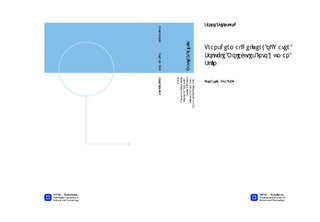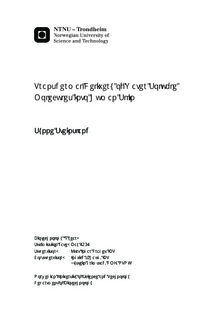| dc.description.abstract | The skin is the largest organ of the human body and it constitutes a great protective barrier against entry of harmful microbial species and foreign materials into the body. The barrier function is a result of the highly hydrophobic nature and compact structure of the outermost skin layer, which makes transdermal delivery of drugs difficult. The aim of this study was to investigate diffusion of hydrophilic fish gelatin peptides and alginate oligomers (G-blocks) into human skin, and to evaluate the effect of skin pretreatments, vehicles and the different characteristics of the test samples on transdermal diffusion.Fish gelatin was degraded by acid hydrolysis to produce peptides of varying molecular size, and the molecular weight distribution and molecular weight averages of the peptides were determined. Further, peptides were conjugated to fluorescent dyes, and together with fluorescently labeled G-block oligomers, they were utilized as traceable model drugs in the transdermal diffusion experiments. Full-scale skins, from healthy human adults after abdominal plastic surgery, were used and the transdermal diffusion experiments were performed in Franz-type diffusion cells. The surface of the skin tissues mounted in the diffusion cells was either untreated or treated with micro-needles or lasers, to disrupt the skin barrier. The model drugs were applied on the epidermal side of the skins in both a 60% dimethyl sulfoxide (DMSO) and a 10% polyethylene glycol 200 (PEG200) vehicle, and the vehicles were also separately applied on skins as control samples. After the transdermal diffusion experiments, imaging of the skin tissues were performed by confocal laser scanning microscopy.An incubation time of 22 hours was determined for the transdermal diffusion experiments and pretreatments were necessary for the model drugs to successfully diffuse into the skin. Pretreatments with micro-needles and laser resulted in enhanced diffusion of the test molecules into the skin tissues compared to diffusion into untreated skin. Laser treatment was found to have the most profound enhancing effect on transdermal diffusion, and enabled efficient diffusion both into and through the skin. Of the four model drugs chosen for use in the experiments, the smallest fish gelatin peptide sample, with an estimated average molecular weight of 3000 g/mol, applied on skin tissues in a 10% PEG200 vehicle, showed the most efficient diffusion into and through human skin. | nb_NO |

